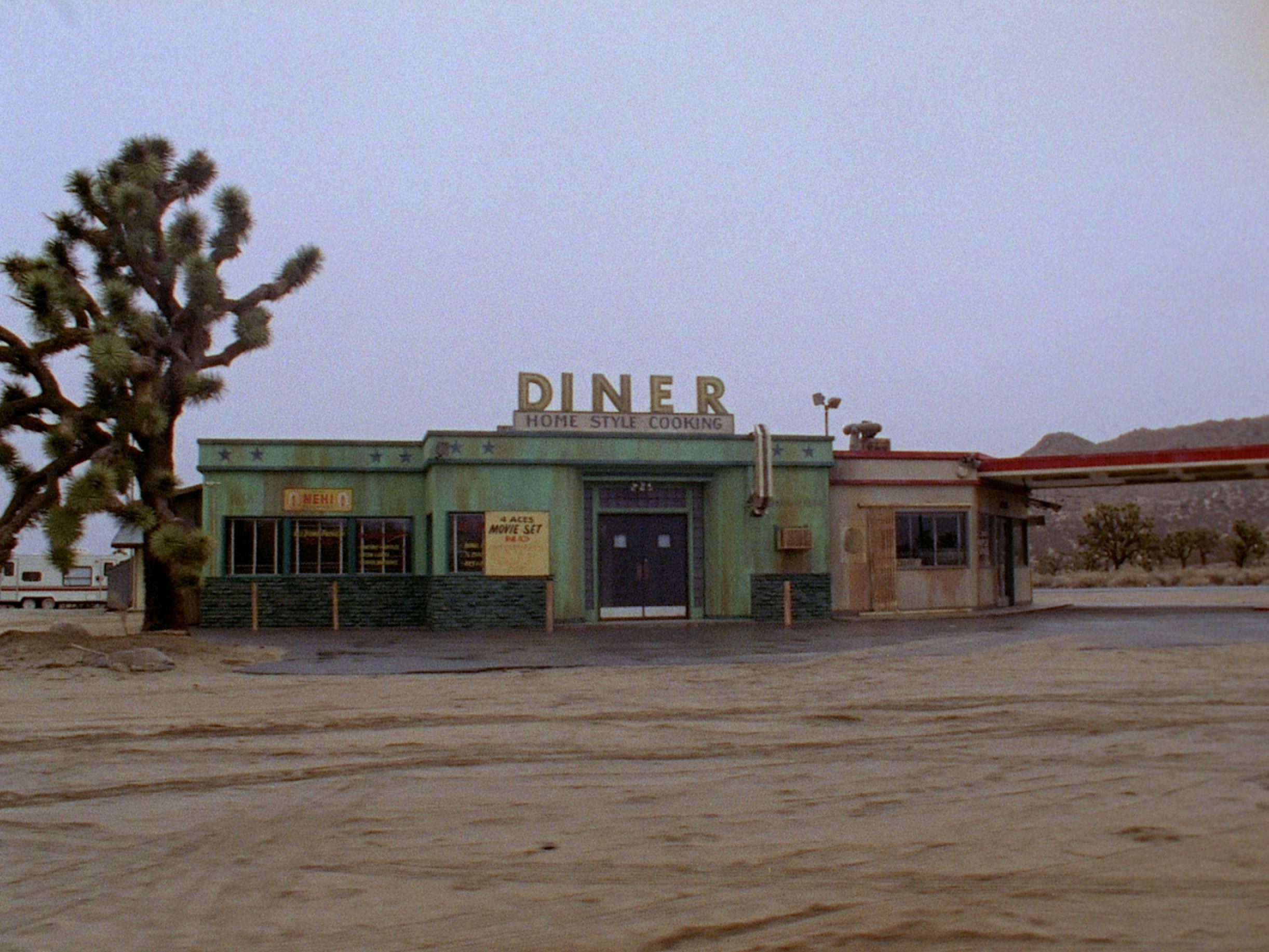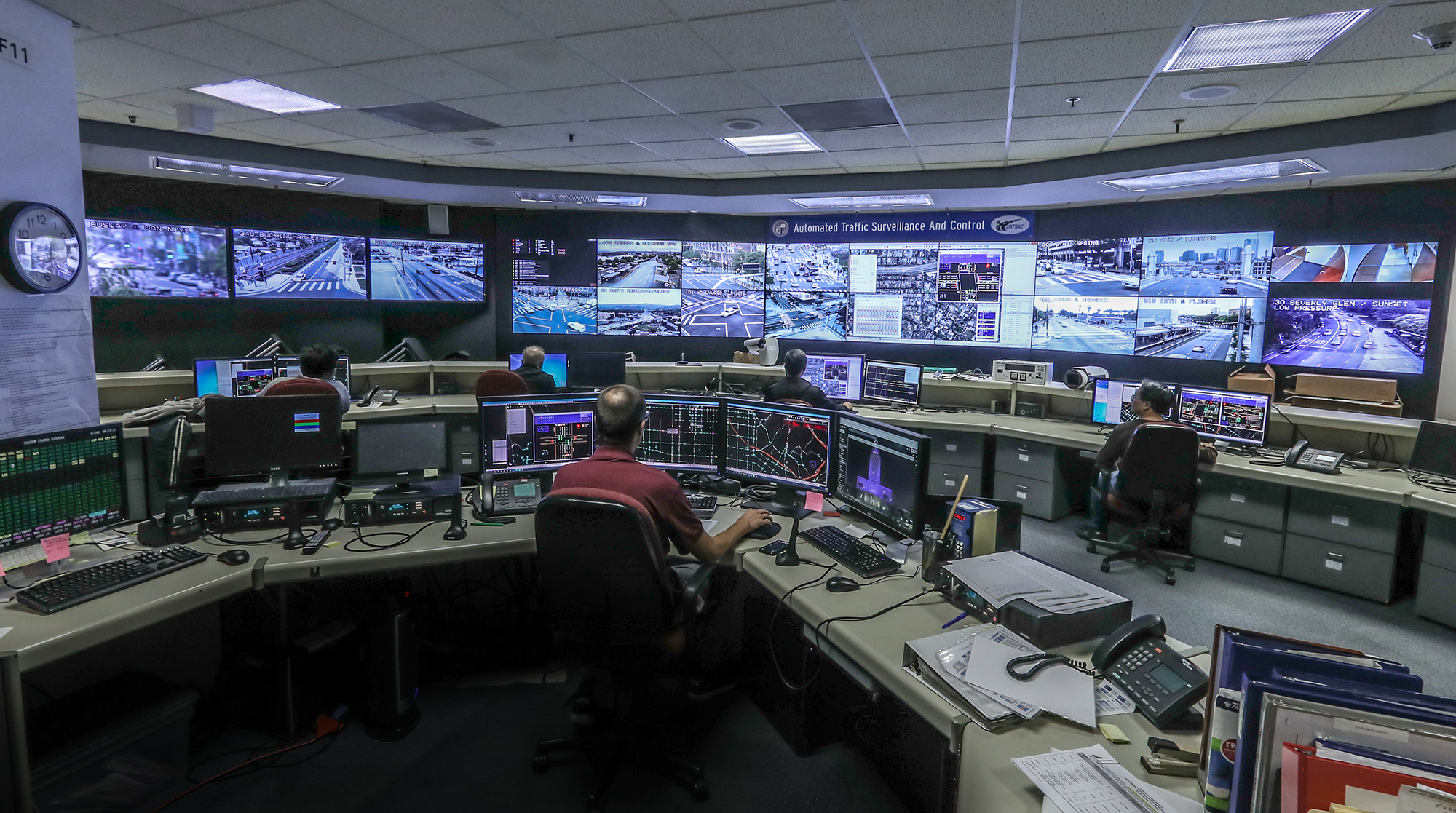Thanks to Alin Răuțoiu from the excellent, unsparing and vital Dezarticast, and his quest for a quality copy of this gem. So, now you got to see it too, spreading it around as far and wide as possible. All my gratitude to Gabi ‘Pnea’, peripatetic chronicler and modern-day Naturphilosoph for sharing his treasures, for his tech support and for kindly providing invaluable input whenever his nudging managed to keep me busy.
In its portraiture and depiction of a contemporary city – Los Angeles Plays Itself remains to my knowledge unsurpassed. From Kiss Me Deadly noirs to Chinatown to Cassavetes to Who Killed Roger Rabbit(still acid drenched in my celluloid melting memories), it has got it all.
Made from the heart by Thom Andersen, patiently foraging & carefully embedding his suspenseful history within this W coast city, marking its architecture, its urban layout with close knit social textures via clips from the whole breath of cinema. To call it an exemplary critical theory essay or run of the mill ideological critique would sell it short. It is a sprawl (sprawling horizontally like the city Andersen would never shorten or reify), nearly capping at 3h long, its either full immersion or ur do ur own cuts – in your own time, anyway its a total treat. It is a well spent time and a tangible place to return to and revisit. It gives much needed context to what a city is and can be. How the city is much more than the sum of its movie roles or extras parts, even if Los Angeles does strike one like a readymade Map to the Stars. Even if being a snitch – as the narrator remarks, in dire times of the McCarthy era insured some famous name with a star on Hollywood’s Walk of Fame.
The whole essay somehow builds up on the way Los Angeles works and doesn’t work as a set piece. It is sprouting out from an uncensored love for a SoCal megalopolis that feels much mistreated, much misrepresented and downright brutalized whenever it gets glamorized or held up against big spotlights. Los Angeles Plays Itself always mistrusts the floating subjectivity of the omniscient narrator, even as it discards one camera-eye after another, able to follow what has been left out, making its own route trough many takes, jumps and cuts, managing in the end to somehow operate at ground level assembling blueprints, inserting press clippings with working class histories that do not make it into the limelight. Floating from camera to camera does not make for an unwieldy collage or jumble, but an even match of cut to cut, criss-crossing incompossible temporal jumps & slices of a kaleidoscopic urbanity. A slippery city that slips trough the fingers of best documentarists or cinematographers. It never relinquishes Los Angeles to its celebrated (American or European, lowbrow or highbrow etc) author star/ film directors. You can simply also enjoy every sample and wanna see more of the original source material (see below). As moviegoers for sure we can never go into full popcorn mode. Neither does it spare the film moguls that have calibrated & celebrated and selectively repurposed a city to fit their own projections and openly espoused ideological political agendas or class interests. The city cannot exist just as a pure disconnected location, as there is no “simple location” (as Whitehead puts in Science in the Modern World). No sequence seems to exists on its own. All sequences somehow communicate and each movie cut seems to intervene or presuppose another one. Without such overlaps any movie taken in its isolated solid state tends to eclipse the city underneath and beyond, even when it purportedly wants you to discover it. The city as a hidden reality is one that needs to be materially traversed.
A cinematic city abstracts from – and conceals whenever it ‘reveals’ or try to sell a ticket to an audience that buys its promised demi-monde land, the mondo tour, the shocking underbelly, the sleaze or the dazzling cyberpunk rain-soaked future (a washed out unresolved dream twinkling in the eyes of the city planners) or get lost on the byways of Sunset Boulevard.
Los Angeles police LAPD in movies part is just amazing. It is some of the best analysis of cinematic representation of police I’ve seen – especially during such a consistent proof of US police misdemeanor, militarization, brutality and point blank murder of African America or Lantinx. From the idealized self-image of a smug cop, to the incredibly arrogant and full of contempt Dragnet policemen to the unwittingly self-ironic scare quotes of “serve & protect”.
There is always streets and corners to be cut and entire building blocks that got razed, redeveloped, gentrified and that do not get credit, but also do not go completly under the radar of film crews – the only ones caring enough and painfully aware of filming another reality mostly (to me) by unknown black directors who are coming from a particular class background or from racially divided and economically oppressed segments of the city. Theirs is a completely different city. What could be more telling than a thermodynamically skewed 1980s – 2019 Los Angeles future?

Blade Runner got a lot of things wrong even if it has a dear and lasting retro-future afterglow. It made a landmark out of Bradbury Building (still after D. O. A. used it as location in 1949), while also making a timeless future bachelor pad out of neo-Mayan Frank Lloyd Wright Ennis house. Yet as Charles Mudede caustically and pointedly remarks, no futuresque movie is a predictive algorithm (nor should it strive to) and retrospectively no wonder it missed the crux of things since “there are no smartphones, no internet, no financialization, no investment banks”.
Modernism – as a style and legacy seems to get a bad rap in US movies and Andersen makes it painfully clear that somehow most villains, even the most cliché tabloid high corruption, bribery, ‘confidential’ supposed conspiracy – are framed within the most stark examples of modern architecture, against the aims and even the histories of these buildings. And this in an almost complete reversal of the aims of the entirety of such modernist architecture. Think of those wide un-decorated, egalitarian spacious living, defined by the geometry of clear lines that openly rejected the shackles of the past. An architecture of light and transparency (thinking here of the European Bauhaus impetus by Bruno Taut and further back to the Scheerbartian utopic potential of light), buildings that get recast in Hollywood as scandalous dens of vice. To me Anderson’s retrieval of modern architecture’s bad wrap in Hollywood movies echoes more recent anti-modernist or sort of pre-modernist revanchist Tartaria conspiracies (part of the QAnon conspiritual bouquet) amply discussed in recent article by Zach Mortice. Yes, the lost “Tartarian empire” has an awful lot of confusion, unfamiliarity and cultural dislocation & also suffers from something akin to the Mandela Effect. Yet as this video essay amply demonstrates there’s tremendous Hollywood overwriting and cinematic overcoding onto the very urban and architectural landmarks. These architectural landmarks have been imprinted into memory only after been rediscovered via location scouting, getting heritage status only after they were filmed in and retrospectively recognized as icons. Their whole existence risks being dependent on becoming part of skewed movie worlds. In retrospect and after so many past/present/future architectonic projections, buildings start acting like bona fide labyrinthine multiverse portals like the one from the OA series or the spiraling House of Leaves. As a response to Tartaria craze – to the perceived suddenness of modernist takeover, I would rather reserve the same feeling for something more close to home, i.e. how former forlorn monuments or Communist party buildings have achieved cosmist brutalist sublimity after the fact; an uneasy after-life for ex-Socialist architecture, only too quickly misconstrued or recast as lost civilizations – irretrievable end-of-history procedural.
In its incredible ambition to excavate the ‘real’ city from underneath the movie reels, Los Angeles Plays Itself plays particular attention to the cars – (like the view from the train cut by telegraph poles) sequentially open on all window sides to a sort of permanent TV diorama where Americana takes place (cars to watch road movies). The car is where everything is about individual freedom, post WWII consumerist boom and free expression. In the light of car ownership & peak oil it becomes paramount to see how car industry shapes a city that becomes unattainable on foot by definition, only to be traversed via motorized access or super highway. This is a cinematic story of dwindling infrastructure, of empty boulevards and public transport or lack of public transport, of non access and a public system that has endures steady degradation.
As much as human commuters, traffic and Lowrider car culture are part of iconic Los Angeles, there is no discussion in this ample video essay about the ATSAC (Automated Traffic Surveillance and Control) system of traffic control in Los Angeles that has been operating and continuously developed in the city for almost 30 years. I came across this man-machine assemblage trough an essay about New Media Pharmacology that adopts N. Katherine Hayles’s example of a nonconsious and distributed cognition that does not eliminate or completly circumvent human technical support (Unthought: The Power of the Cognitive Nonconscious 2017). This panspectron (a term proposed by Manuel deLanda) view from the control room looks like a spaceship and it is not driver-less. Looks like any NASA ground control or main deck of an USS Enterprise – wholly made up of divided & continuous surveillance screens of roads and continuous automotive traffic monitoring. It makes its own movie in a different way, yet I am not sure if the functioning or real footage from from ATSAC rooms got featured in any Lost Angeles movies (something tells me it did?). Being adaptive, evolutionary and flexible it is fitting all of Hayles’s criteria for a cognitive assemblage. It would be unthinkable without its human decisions and selectivity, bridging and bringing congruence to the various unconscious and conscious inputs that manage to connect and assemble the city of Los Angeles in a completely new post-cinematic way:
“Drawing input data from innumerable sensors, cameras, and detectors, processed by diverse algorithms, it is a massive technical system that requires various levels of human oversight and collaboration, from those who attend the complex computer output to individual drivers and pedestrians’ daily routines.“(Joseph Schneider). This self-correcting, machine-human learning traffic system sounds definitely closer to Chile’s pre-coup Project Cyberyn in that it serves the city and its residents with ‘no direct connection to market considerations’(Hayles 2017). Definitely one such rare example that does not have the in-built Coded Bias that is intrinsic to so much of today’s Algorithmic Capitalism. It feels that ATSAC subroutines even if not really prominent as a feature of the city or in our collective imagination, could subtend a lot of what gets registered either sensorially or cinematically recorded (think here of a drone camera perspective) as a nightly city grid – as blinking neural streams without any apparent behind-the-scenes, a false image of no -planning and of absent -invisibly, progressively evolving- large scale coordination.
Finally, Rotten Tomatoes makes certain that the critical consensus and appreciation for the tremendous effort and research that went into this essay is nearly universal: “A treat for cinephiles, this documentary is a comprehensive, academic, and enlightening film essay concerning Los Angeles and its depiction in the movies.”
Movies featured in Lost Angeles Plays Itself on IMDB
List of movies featured in Lost Angeles Plays Itself available on Mubi




